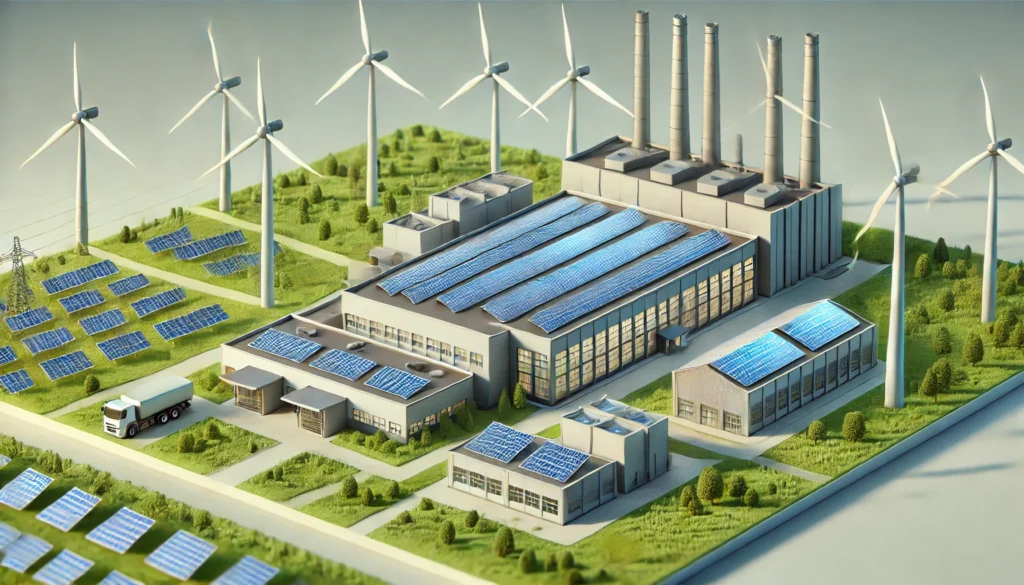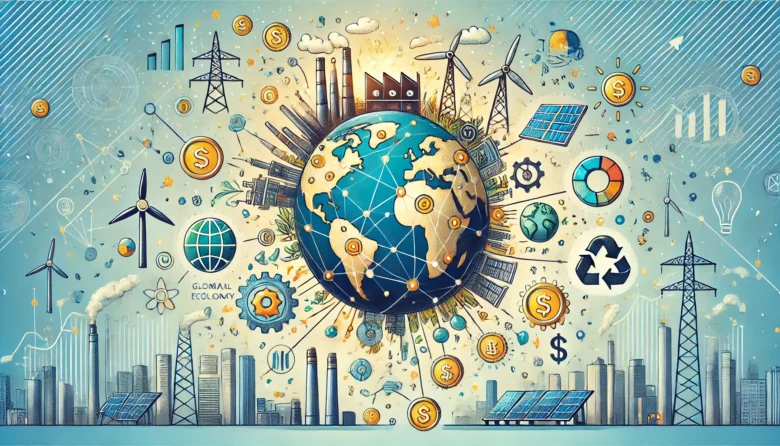Fun Fact: 2023 global carbon dioxide emissions reached a record high of 37.4 billion metric tons, influencing climate policy decisions worldwide.
From floods to droughts, the impacts of climate change are impossible to ignore. But there’s a lesser-talked-about angle that affects all of us in an equally profound way: how climate policies shape global economics. In a world increasingly aware of the need for environmental sustainability, policies targeting climate change don’t just aim to save the environment; they redefine markets, alter trade dynamics, and shift employment trends. So, how exactly do these policies play a role in the global economy? Let’s dive in.
Why Climate Policy Matters for the Economy
Climate policy refers to a set of rules and regulations that governments implement to limit environmental harm. These include reducing greenhouse gas (GHG) emissions, promoting renewable energy sources, and encouraging sustainable business practices. While climate policy is primarily designed to combat environmental degradation, its ripple effects touch nearly every industry and region.
For instance, the European Union (EU) Emissions Trading System, one of the largest carbon markets, sets a cap on carbon emissions and enables companies to trade carbon allowances. This market-driven approach not only incentivizes low-emission technology but also affects the cost structures of businesses across industries, from automotive to manufacturing.
Shifts in Industry and Employment
One of the most direct impacts of climate policy is the transformation of industries. As governments enforce stricter emissions standards, industries that heavily rely on fossil fuels, like coal mining and petroleum, face challenges. Meanwhile, sectors focused on renewable energy, like solar and wind, are booming.
Take the example of Germany, which has a well-developed renewable energy sector. The German government’s Energiewende policy aims to transition from fossil fuels and nuclear power to renewable energy. As a result, Germany’s solar industry alone has created over 150,000 jobs. On the flip side, traditional energy sectors have shrunk, causing economic shifts in specific regions where fossil fuel industries previously thrived.

Case Study: Tesla’s Role in Electric Vehicles
Tesla, Inc., a U.S.-based electric vehicle (EV) manufacturer, has arguably become the poster child for the impact of climate policy on the automotive industry. With subsidies and tax incentives for EVs, Tesla and other EV companies enjoy a competitive edge over traditional automakers. Countries like Norway, where EVs are exempt from various taxes, have seen EV sales rise dramatically, reshaping their auto markets and encouraging similar policies worldwide.
Trade and International Relations
Climate policy also shapes international trade by setting standards that companies must meet to operate in certain markets. For instance, the EU plans to implement a carbon border tax by 2026. This means that products imported into the EU will be taxed based on their carbon footprint, making high-emission goods more expensive.
This tax impacts countries that rely on carbon-heavy industries, especially emerging economies that may not have the resources to invest in low-carbon technologies. Yet, for those nations, this presents a clear incentive to adopt greener practices. Ultimately, climate policies push countries toward cleaner economies, although they may create friction in international relations.
Example: China’s Role in Solar Panel Production
China leads the world in solar panel production, supported by policies such as government subsidies, affordable loans, and state-sponsored research initiatives. These policies have enabled Chinese companies to dominate the global market, leading to a significant drop in solar panel prices worldwide. While this benefits consumers, it has created challenges for Western countries that cannot compete on price, illustrating how climate policy can create new market leaders and shift economic power.
Financial Markets and Climate-Related Investments
Climate policies have also led to the growth of “green finance,” which focuses on investing in environmentally friendly projects. Governments and organizations worldwide are increasingly issuing “green bonds,” which are specifically used to fund sustainable projects. In 2021, green bond issuance reached a record $500 billion globally, highlighting the rapid growth of environmentally conscious investing.
Case Study: The Impact of ESG (Environmental, Social, Governance) Standards
Companies today face increasing pressure to disclose their Environmental, Social, and Governance (ESG) ratings—a measure of their sustainability practices. Companies that score well on ESG criteria tend to attract more investors, thanks to the perception that they are more sustainable and less likely to face regulatory penalties. This trend encourages businesses to adopt climate-friendly policies to improve their ESG ratings, shaping corporate strategies across sectors.
Consumer Trends and Climate Awareness
As climate policy advances, consumers are becoming more climate-conscious, driving demand for sustainable products and services. A recent study by Nielsen found that 73% of consumers would change their habits to reduce their environmental impact. This demand shift has significant economic implications, pushing companies to adopt greener practices or face declining sales.
Example: Fast Fashion’s Response to Climate Policy
The fashion industry is known for its environmental impact, contributing around 10% of global carbon emissions. However, as climate policies and consumer expectations change, many fast fashion brands are under pressure to adopt more sustainable practices. Companies like H&M and Zara have launched sustainable clothing lines, while luxury brands are investing in eco-friendly materials. This shift in production affects not only fashion but also related industries like textiles and logistics, transforming entire supply chains.
Climate Policy’s Influence on Innovation
Finally, climate policies often spur innovation as companies race to develop technology that meets stricter environmental regulations. The push for cleaner energy has led to advancements in electric vehicles, hydrogen power, and energy-efficient technology.
Example: Carbon Capture and Storage (CCS) Technology
Carbon capture and storage (CCS) technology is an innovative solution designed to capture carbon dioxide emissions before they enter the atmosphere. Companies within the oil and gas industry, such as Shell, are making significant investments in Carbon Capture and Storage (CCS) technology to align with climate goals while maintaining their operations. Though still in its infancy, CCS is a promising tool for carbon-heavy industries looking to adapt to climate policies.
Conclusion: The Road Ahead
Climate policy is more than just an environmental safeguard; it’s a powerful force that shapes global economics. From driving job creation in renewable energy sectors to influencing international trade and sparking innovation, these policies are key players in the economic landscape. As more countries join the push for climate action, businesses and individuals alike must adapt to a world where sustainability is not just a buzzword but a necessary way of life.
The impact of climate policy on the global economy is profound, and each of us has a role to play. Whether by choosing sustainable products, supporting companies with high ESG ratings, or advocating for policies that protect the planet, our choices shape the future. Let’s embrace this shift and move toward a sustainable, prosperous world for generations to come.
Author’s Note:
As someone who cares deeply about both the environment and economic stability, I believe that understanding the link between climate policy and global economics is essential for creating a better future. We can all contribute to a sustainable economy by making informed choices and supporting policies that balance environmental and economic well-being.
G.C., Ecosociosphere contributor.
References and Further Reading:
- European Union Emissions Trading System (EU ETS)
- (2021). The Interaction Effect of Occupant Behavior-Related Factors in Office Buildings Based on the DNAS Theory. Sustainability, 13(6), 3227.
- Park, J. Y., & Lee, Y. J. (2020). Environmental criteria for site selection of wind power projects in South Korea. https://doi.org/10.5194/egusphere-egu2020-21386
- CBAM (Carbon Border Adjustment Mechanism) – Knox Thomas. https://knoxthomas.co.uk/cbam/
- What does sustainable investing actually mean?. https://saga.co.uk/saga-money-news/what-does-sustainable-investing-actually-mean
- ESG Investing – Consider Sustainable Building Materials. https://www.stonecycling.com/news/esg-investing/
- Energy Storage at Utility Scale: California Goes All-in. https://milbankconversations.buzzsprout.com/1083353/14338085-energy-storage-at-utility-scale-california-goes-all-in
- Hard-to-abate sectors: The role of industrial carbon capture and storage (CCS) in emission mitigation | MIT Global Change. https://globalchange.mit.edu/publication/17657




